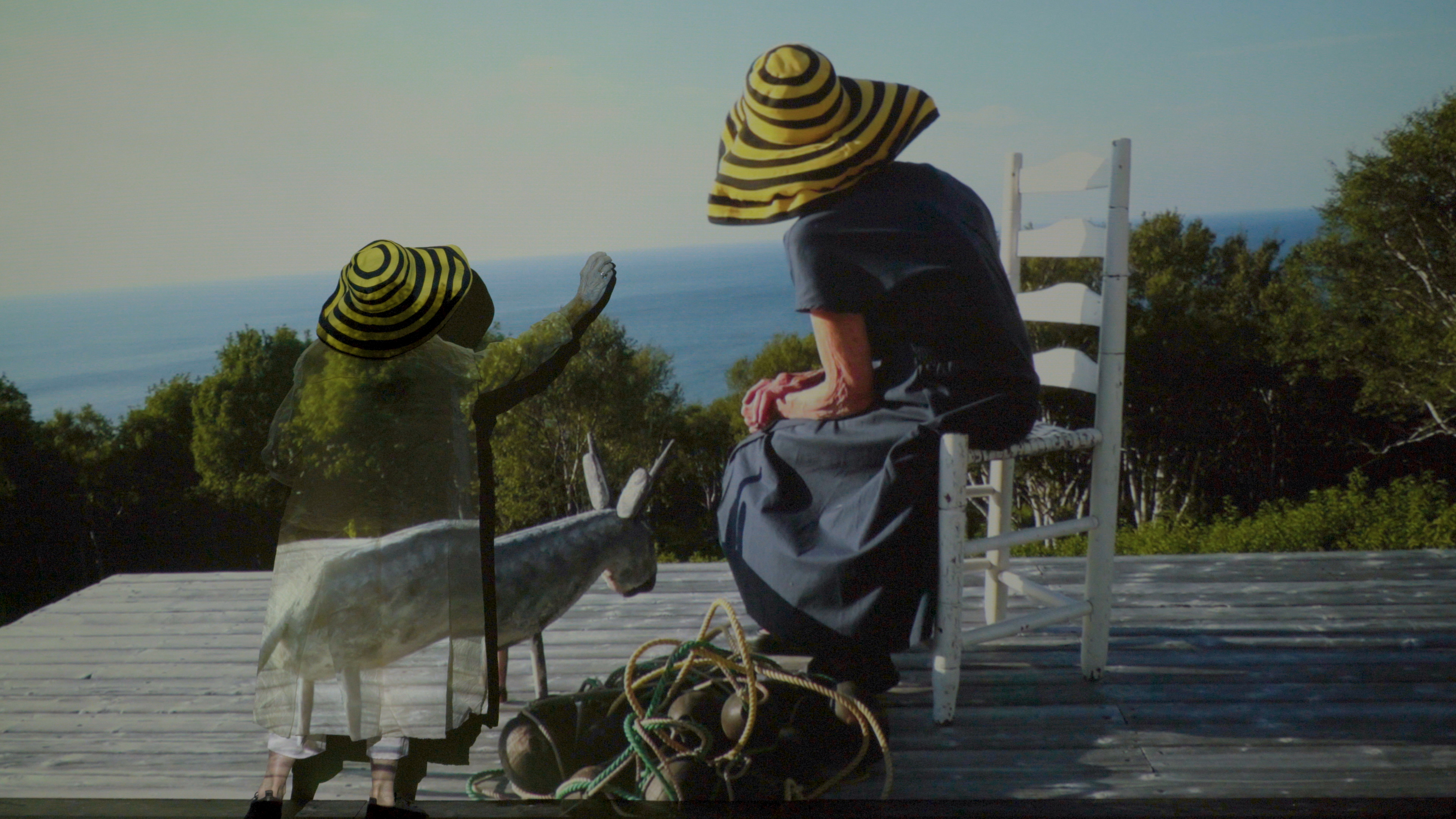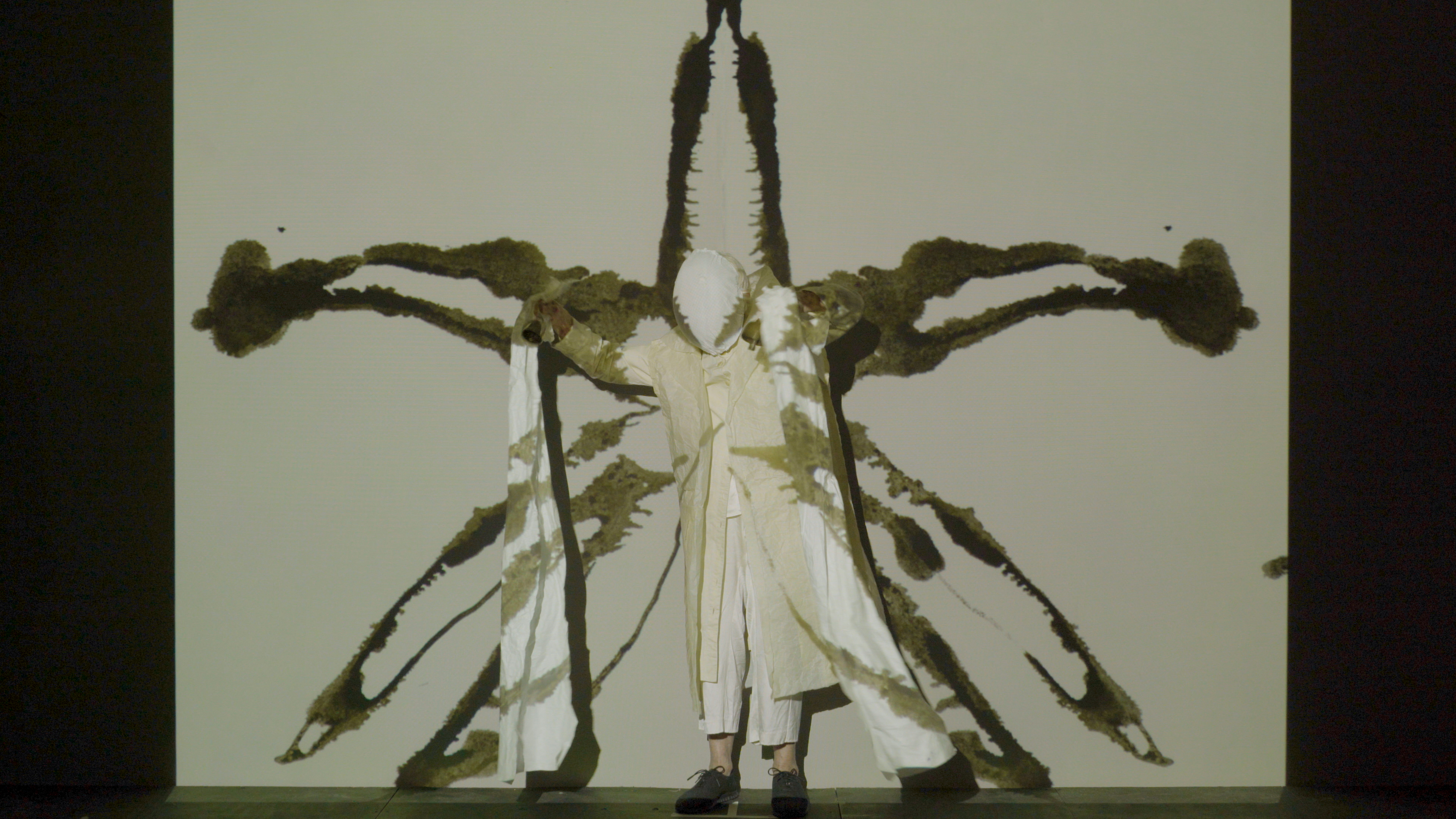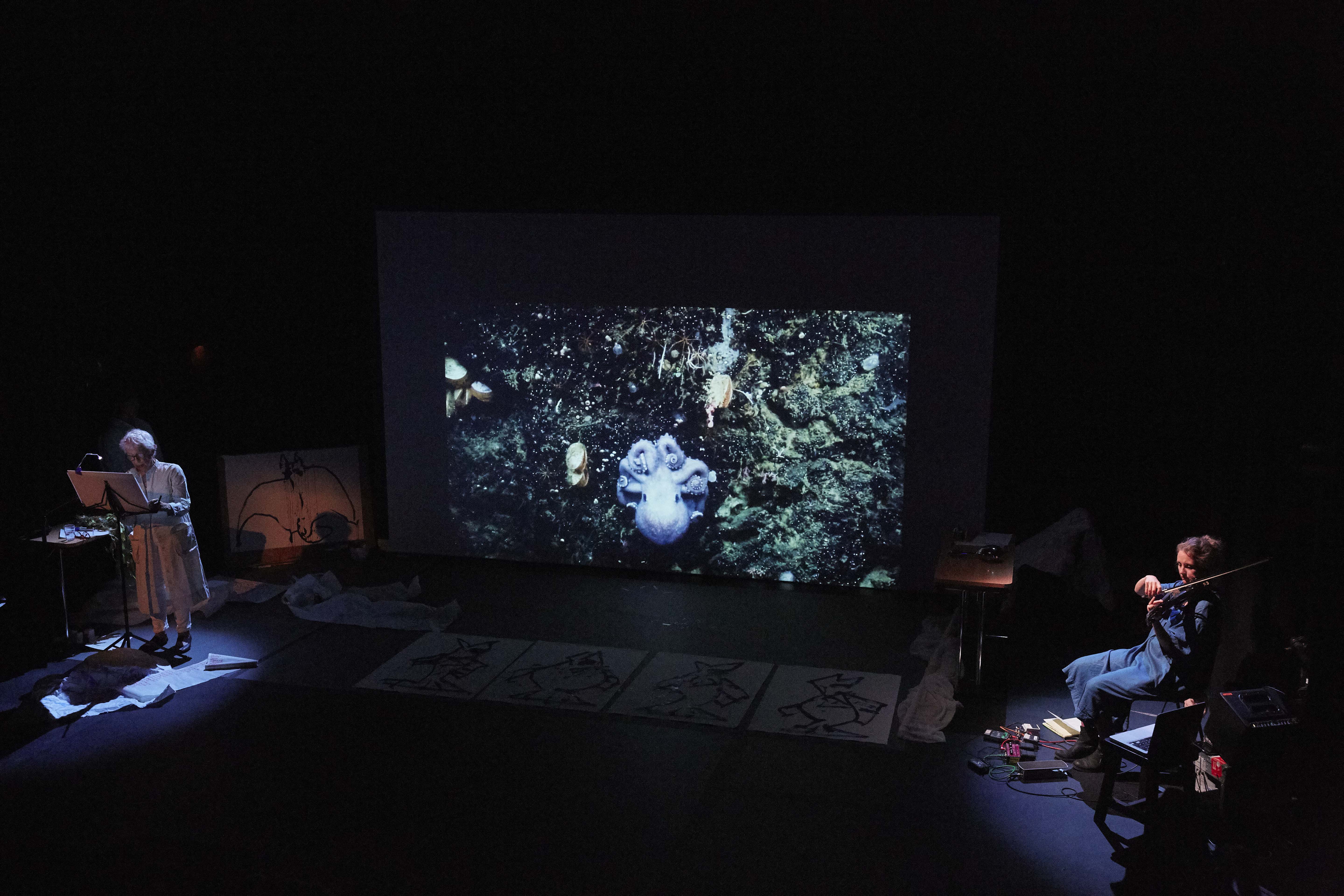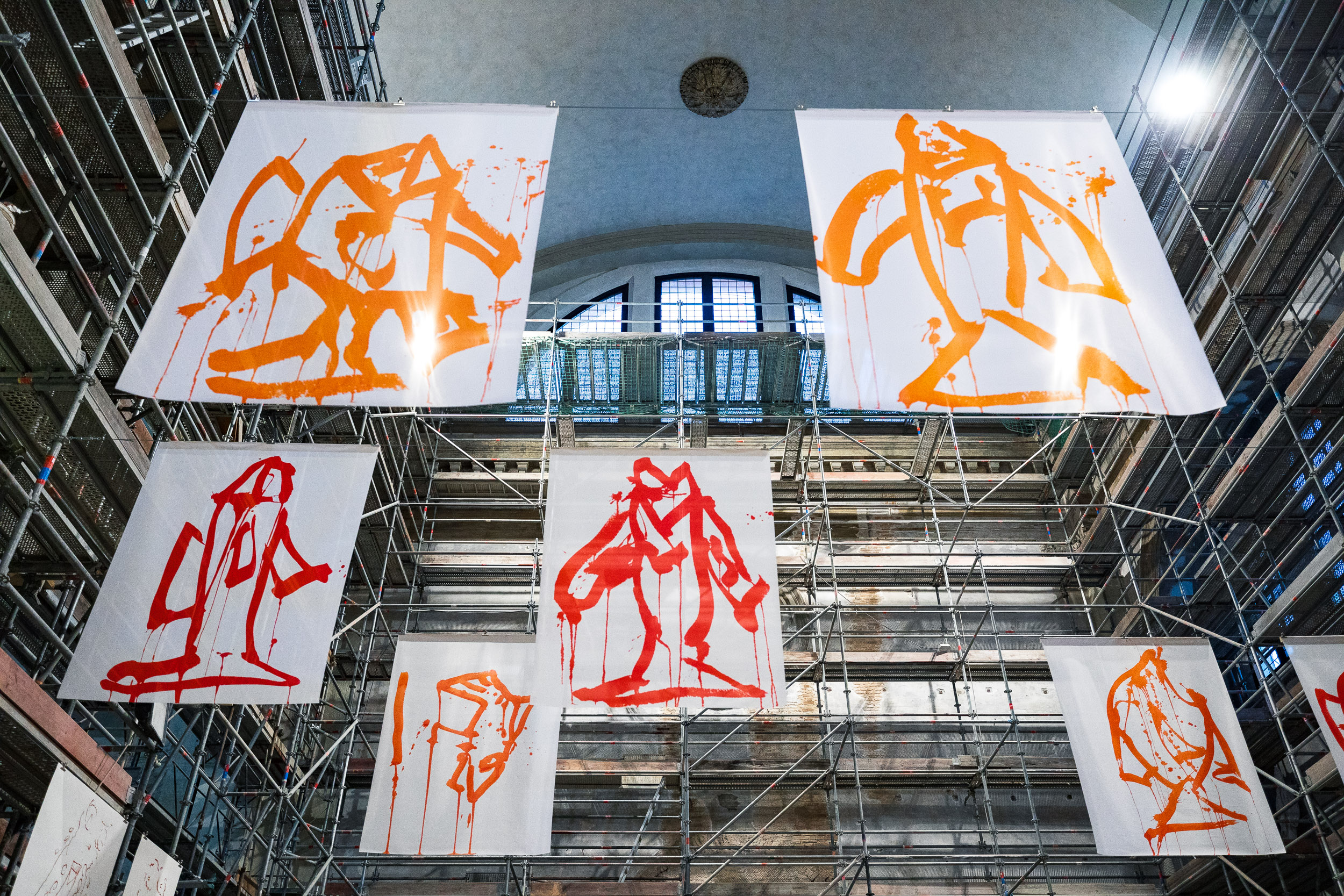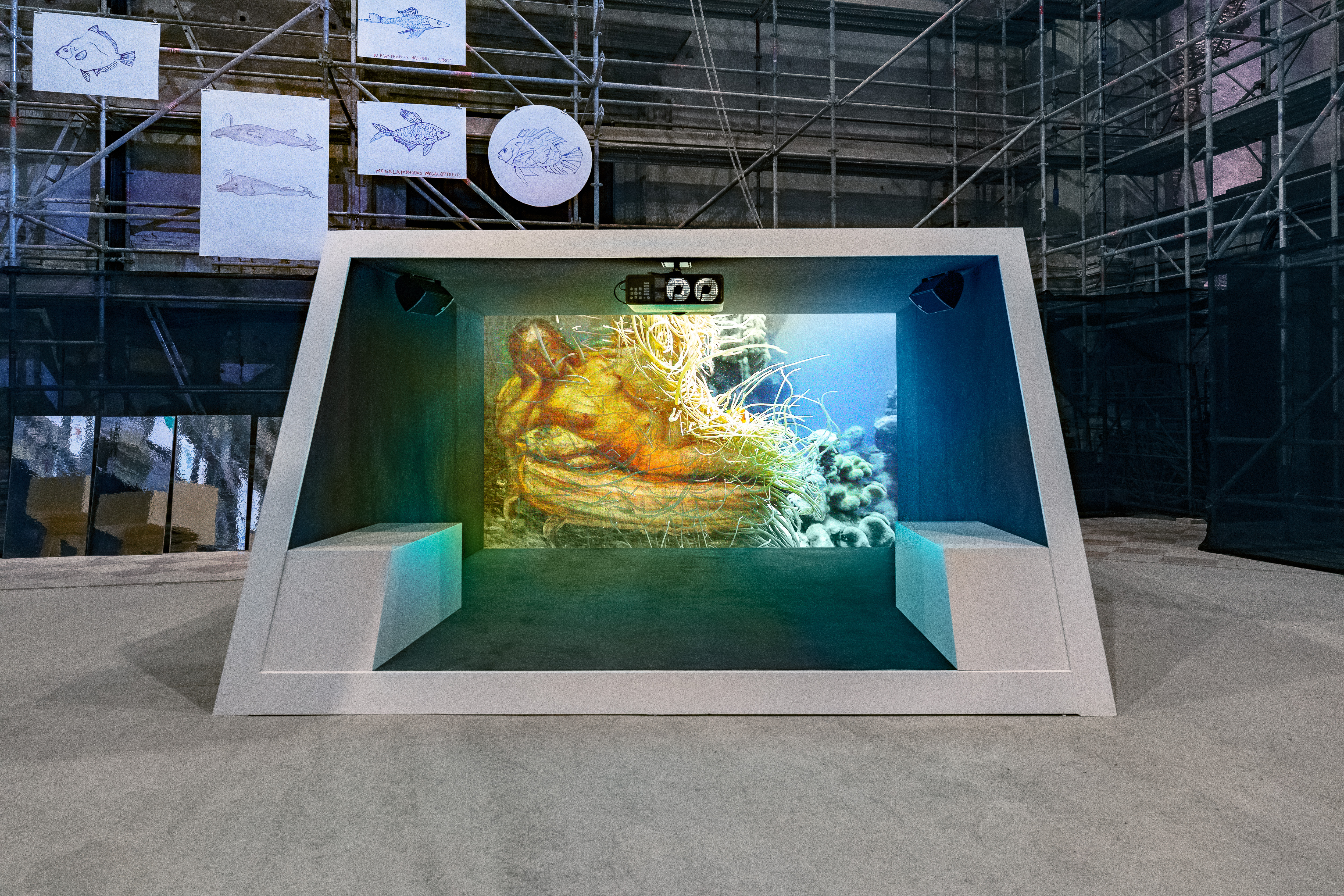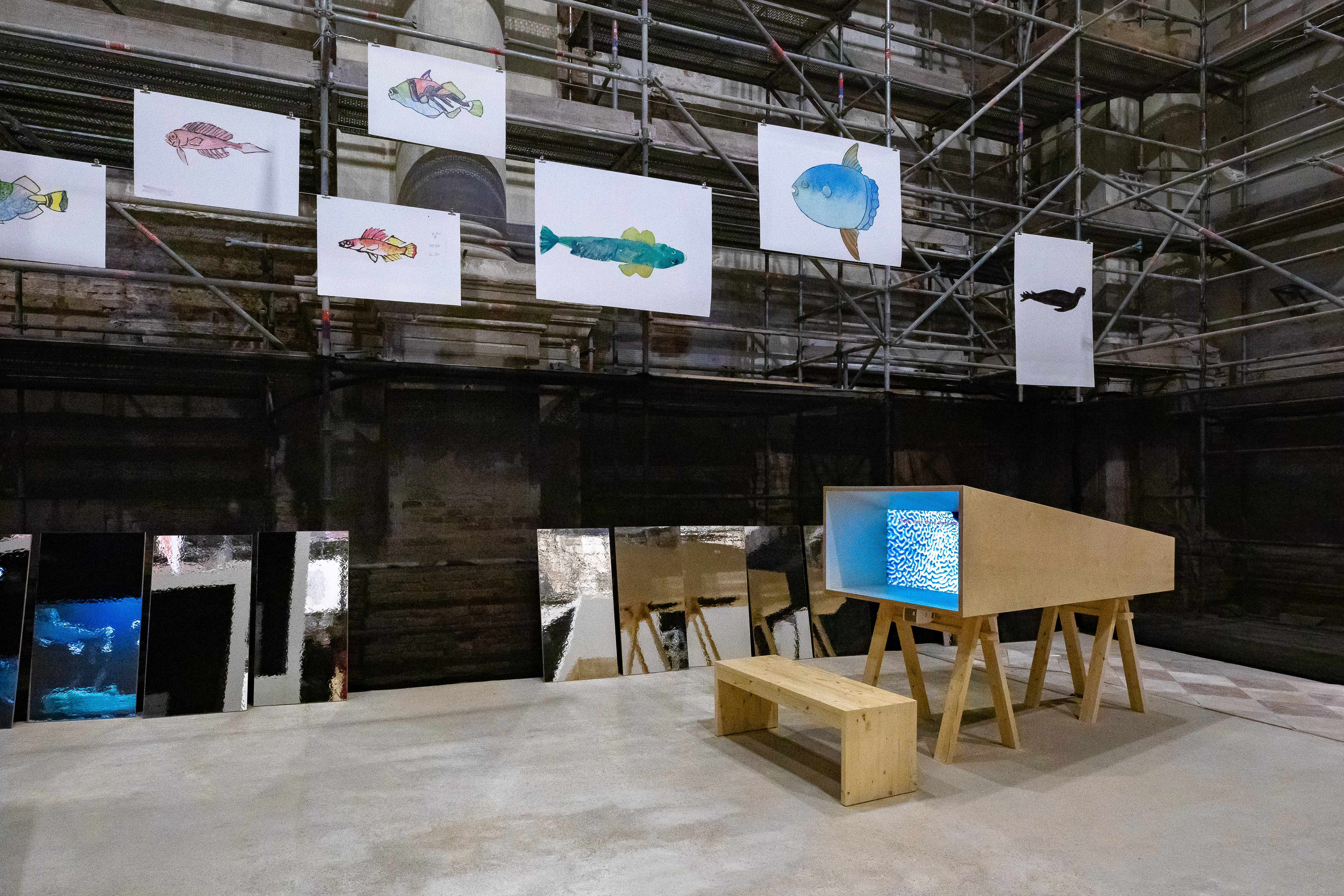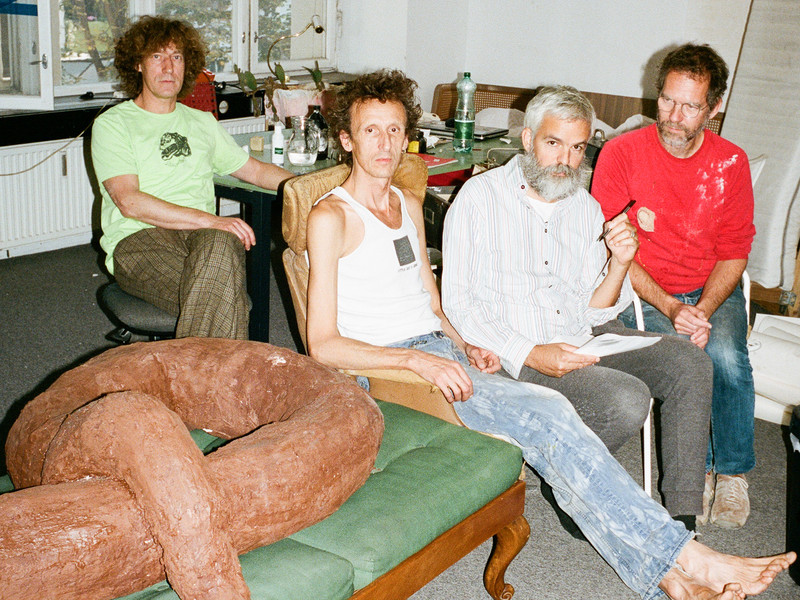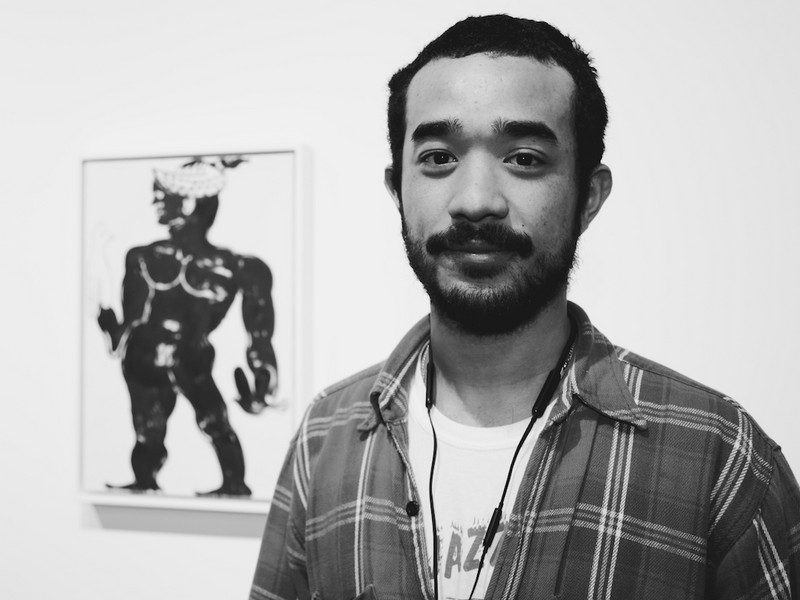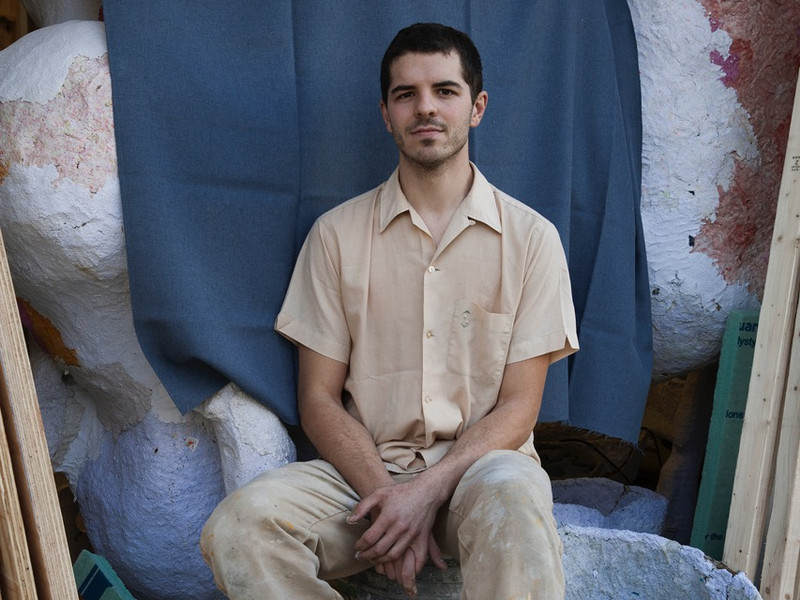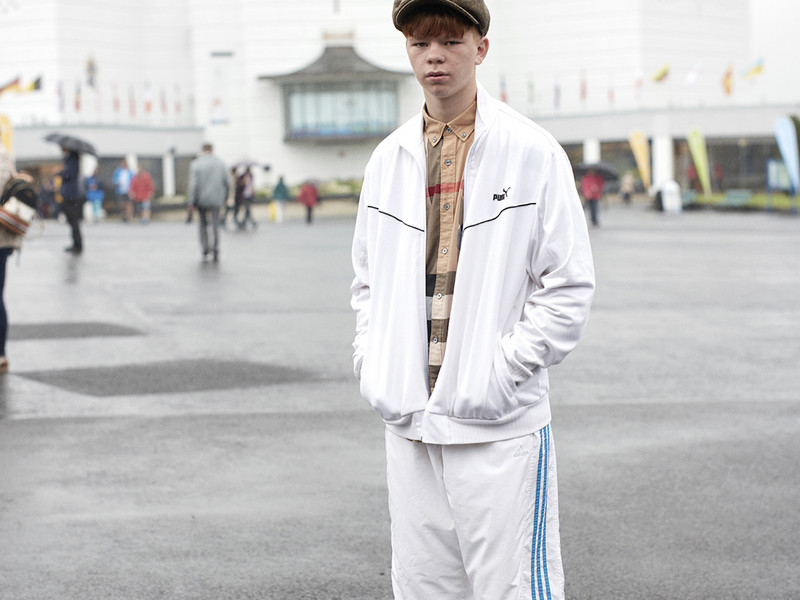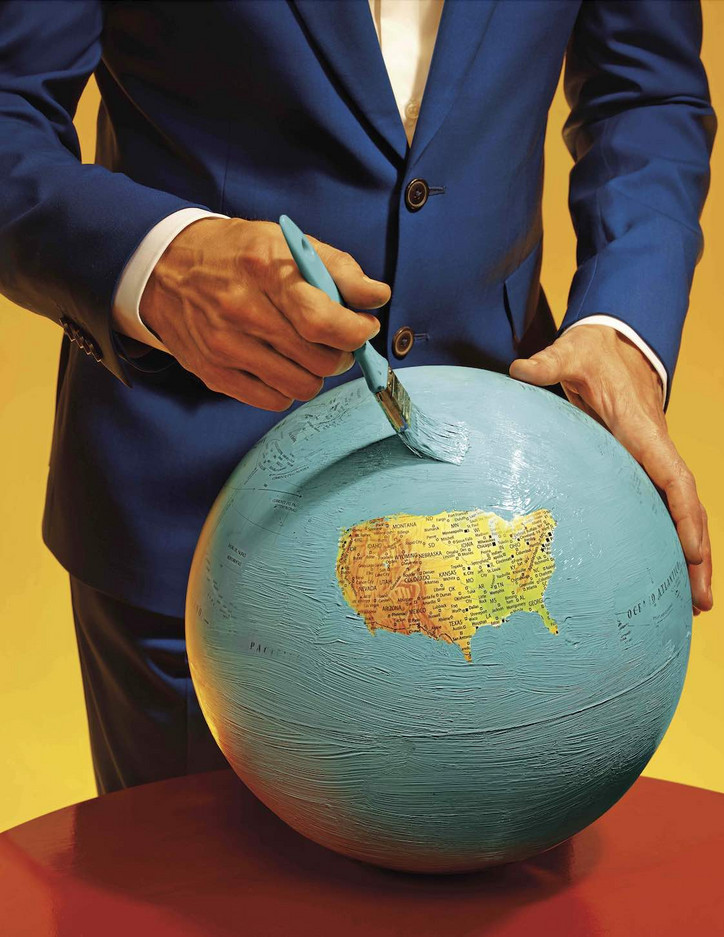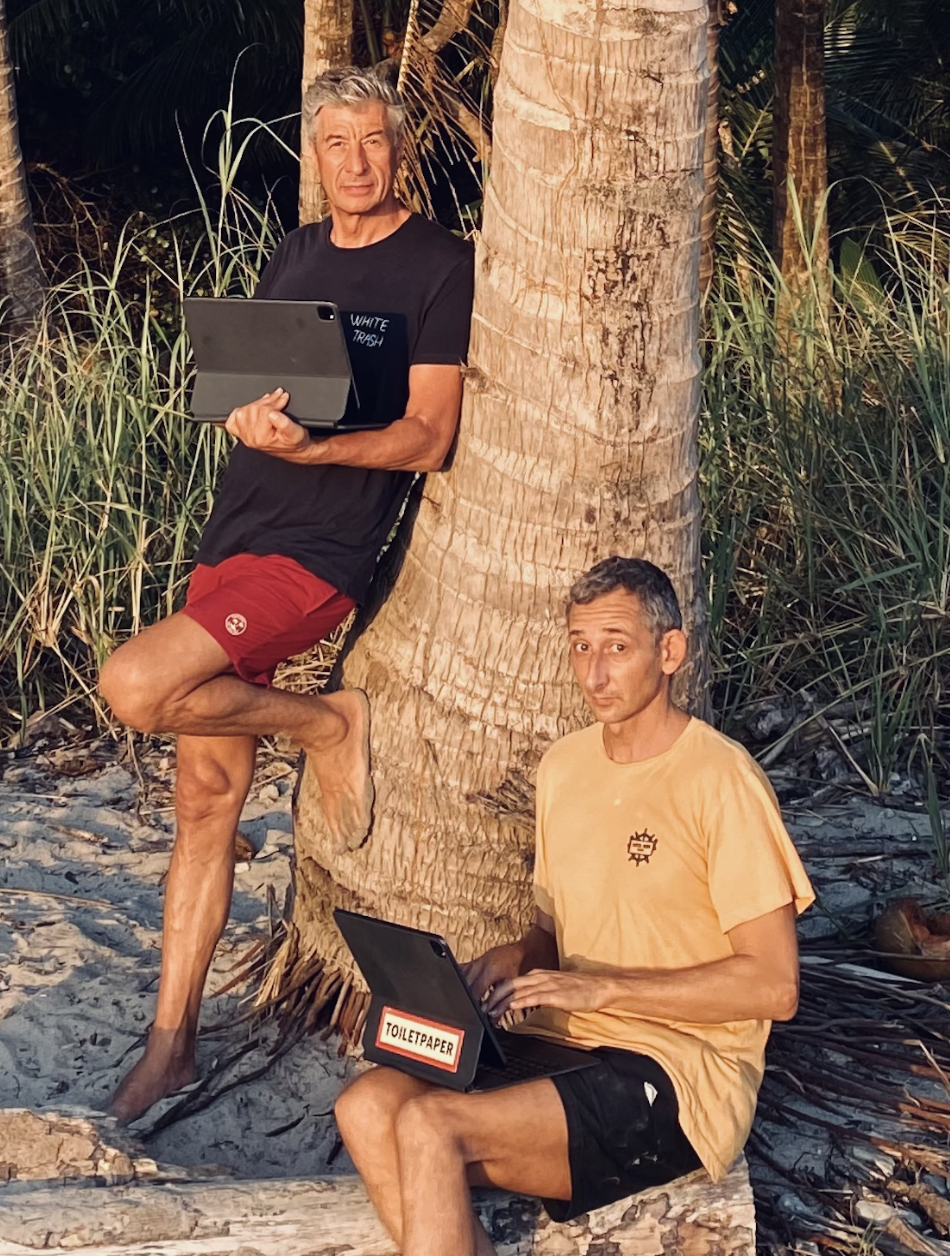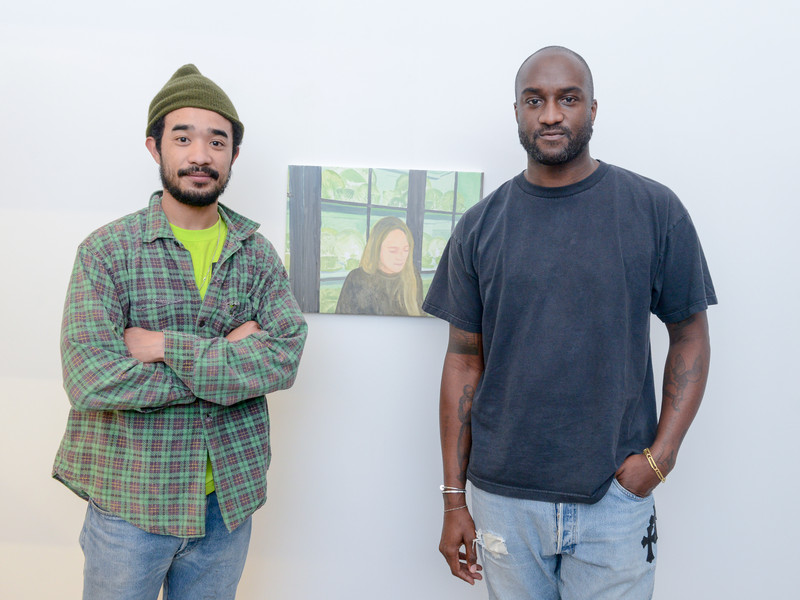Ocean Space
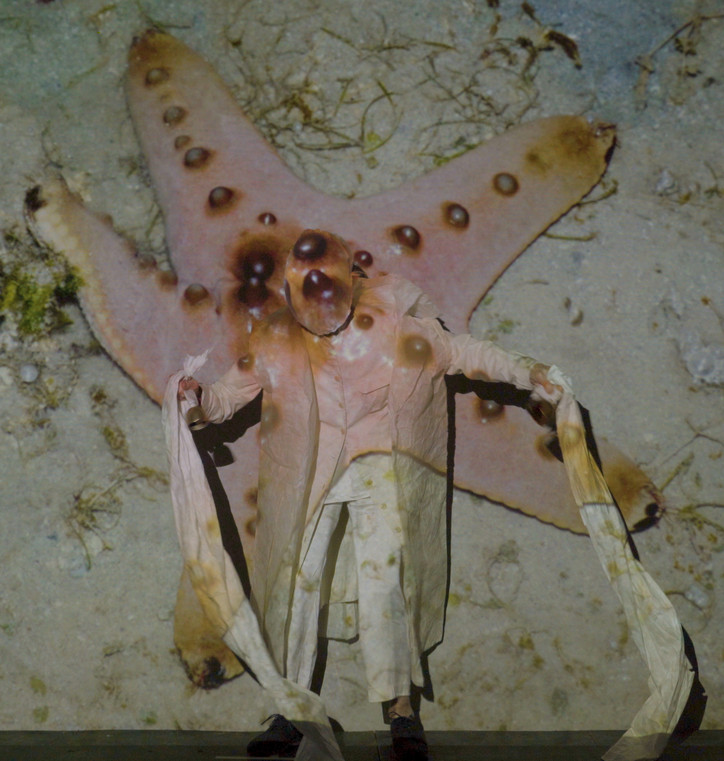
Ocean Space, presented by TBA21-Academy, in Venice, is seeking to mend and redefine our relationship with the ocean; it is like a collective therapist’s couch for humanity to testify, to come to terms with our treatment of the seas. Situated in an ancient Venetian church, the Church of San Lorenzo, which had been mostly abandoned for over one hundred years, it is a space where scientists and artists alike can come together and form a call to arms on behalf of the world’s oceans.
Just in time for the Venice Biennale, the inaugural exhibition by Joan Jonas, “Moving Off the Land II," is a mesmeric celebration of the world underwater, the second in a series with performative visual pieces that exist at the nexus of scientific and artistic inquiry. The artist traveled with oceanographers the world over, collecting video footage and research to inform her body of work, which is an intimately realized and boldly executed multimedia series that brings to light questions of biological intent, reminders of our own connection to the ocean a la Origin of Species.
From the ocean we came, and to it we shall return — the least we can do is treat it with respect.
office spoke with co-founder and director of TBA21-Academy Markus Reymann about the goals of the space and Jonas' exhibit.
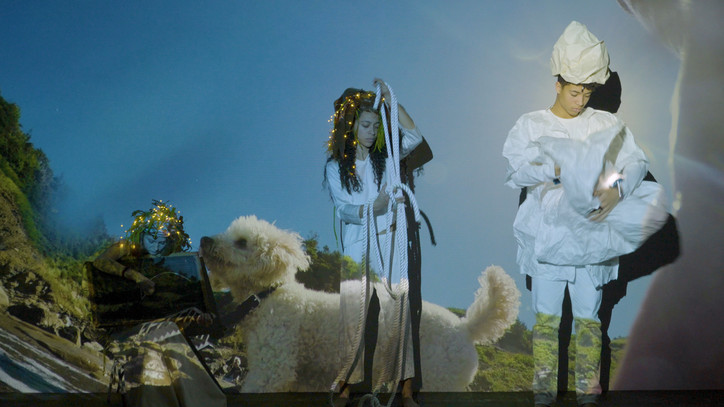
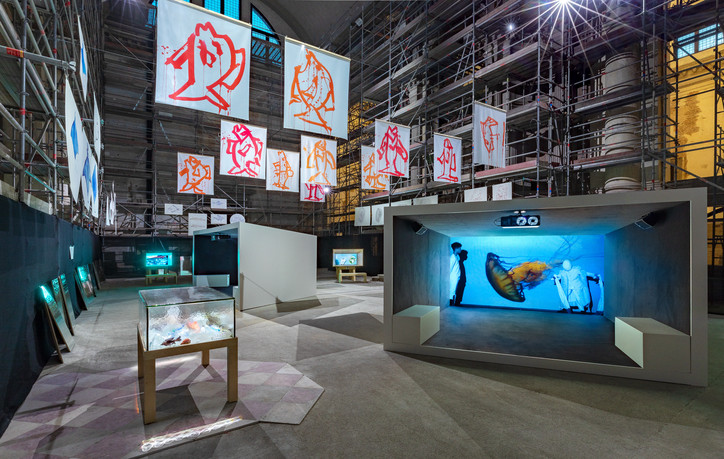
Above: 'Moving Off the Land' and 'Moving Off the Land II' at the Church of San Lorenzo, Venice.
How did you decide on Joan Jonas as the inaugural artist to exhibit in the space? What about her work speaks to this project?
The process of working with Joan Jonas is indicative of the way TBA21–Academy connects disciplines, people, geographies, and formats. The Academy’s journeys at sea and on land catalyze processes that involve traveling, wandering, researching, and allowing art to happen in an organic way. Jonas’s methodology is related: she visited numerous aquariums around the world, experienced and filmed in the ocean, joined the Academy on a residency in Jamaica, spent time with local communities, gave a workshop to art students, and engaged in conversations with the scientific community, specifically David Gruber, who has been a close collaborator on this journey.
Participating in the process with Joan, who recognizes what art can achieve, how art senses the world, and how art motivates different knowledge systems about the ocean, opened our program up to forms, narratives, questions, limits, and futures we never saw before. At Ocean Space in Venice, “Moving Off the Land II” is a reminder that the subject of the program is a living, sentient entity: the ocean.
Can you describe Jonas’ piece and how it ties in with Ocean Space?
Joan's work confronts the complex relationships that humans have with the natural world. Part poetic musing, part scientific inquiry, the installation brings together the various elements that are at the core of what this new transdisciplinary center is all about.
“Moving Off the Land II” evolved in an iterative process over the course of three years, following Joan’s performance of the work in 2016 in Kochi coinciding with the Biennale. The performance was part of TBA21–Academy’s fellowship program. The Current, which brings artists and scientists on expeditions of collaborative discovery at sea and disseminates the questions and findings arising from the expeditions in land-based Convenings around the world. Ute Meta Bauer was the first expedition leader of The Current and, having a long-standing relationship with Joan, brought her into the program during the Convening in Kochi. In the years since, Joan has continued to perform and develop the work, incorporating underwater footage from the marine biologist David Gruber and from her residency in Jamaica with our scientific partner Alligator Head Foundation. The result is a dynamic installation — of video, drawings, sculpture, and sound — that engages the public in a moving tribute to the ocean. The work inspires us to slow down and consider our relationship with the sea and its creatures, resonating deeply with Ocean Space’s core mission.
What is the goal of Ocean Space?
Ocean Space encourages us to radically reimagine how we see and treat the oceans. While initiated by TBA21–Academy, Ocean Space is conceived as a collaborative platform for exchange and discovery. Our hope is that it will become a self-generating resource, cultivating new mindsets that will dare the public to think differently and make a difference.


Above: The Church of San Lorenzo and 'Moving Off the Land'
I love that it’s in a renovated church—how/why was the space originally chosen?
The Church of San Lorenzo is a beautiful and enigmatic building that, unfortunately, has been largely closed to the public for more than 120 years, with few exceptions. We first visited the church during the 2012 Biennale when the Mexican pavilion was hosted there and were immediately struck by the breathtaking dimensions of the space. The opportunity to reanimate this incredible building and reintegrate it within the cultural fabric of the community was one we could not pass up. Venice’s strong connection to the sea and history as a center of exchange made it an ideal location for Ocean Space. Our hope is that Ocean Space will engage the local community and international visitors alike into a global vision for change.
How do you think humanity’s relationship with the ocean needs to change? How has it been defined thus far?
I strongly believe that we have to radically change the way we live and interact with the ocean. At this point, the ocean suffers the tragedy of the commons, the high seas belong to no one and everyone at the same time. Covering 72 percent of the surface of the planet, the ocean is too big to comprehend; it is a “hyperobject”— an entity of vast temporal and spatial dimensions that puts fundamental strains on our philosophical habits of thought and ways of reasoning, as per Timothy Morton.
Although every other breath each of us on this planet take comes from the ocean, we know more about the dark side of the moon and Mars than we know about the ocean. Most oceanographic studies cannot be done by people, due to cost and difficulty, and are done instead by remotely-operated vehicles and sensors. I strongly believe that we urgently need to reconnect to the ocean, its health is fundamental for the survival of our species on the planet.
I’ve always considered the ocean a kind of divine entity. Does working with the ocean start in an emotional place? How would you describe your personal relationship with the ocean?
Although I am personally involved in a variety of activities that physically connect me to the ocean — exploration, research, science, conservation, protection and restoration — the ocean, for me, has become an incredibly powerful metaphor. In a time that demands radical changes and a drastic rethinking of our life on and with the planet, thinking in a way that considers and comes from the ocean provides a solution. Can we allow ourselves to fully accept a constantly changing and intricately interconnected system and act upon our realizations? This informs the way we conduct research, we accept knowledge, we foster collaborations and we defend accessibility.
Ocean Space opened March 24th, 2019. "Moving Off The Land" will be on view through September 29th, 2019, with a live performance by Joan Jonas on May 7th. All perfomance images are courtesy of the artist and Gavin Brown’s Enterprise, New York/Rome, photos by Elísabet Davíðsdóttir. All install images courtesy of Ocean Space, photos by Enrico Fiorese.
